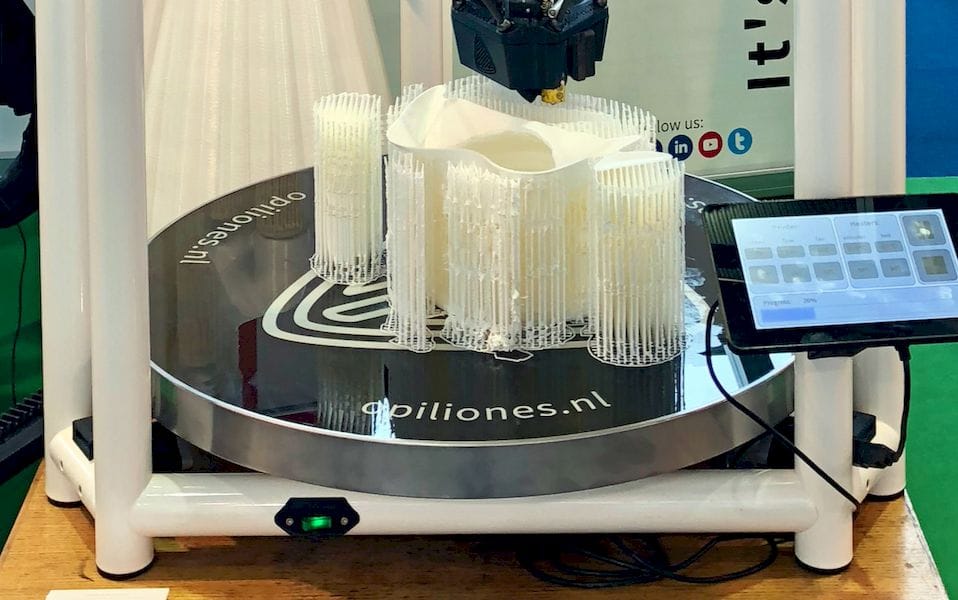
When 3D printing arrived, the public waited to see how it would change the world.
While no major changes can be noted yet, as the cost of 3D printing drops and it slowly enters the mainstream market, businesses revolving around the technology are beginning to appear. By blurring the line between producers and consumers, and facilitating mass customisation, local production and sustainable materials, 3D printing is sure to impact on the way business works. Now is the perfect time to get in on this disruptive technology.
The 3D printing industry is composed of a lot more than just the printers and there’s a range of roles one could assume within the industry. If you want to become involved, here’s 5 tips for setting up your 3D printing business.
An Idea That Adds Value
Whether you have a 3D printer or not, to set up a successful business within the field, you must first have an idea that adds value. You might decide to set up a service, or you might print actual products, but either way your idea needs to be innovative, unique and valuable. This goes for all businesses, but the bottom line is it’s not enough to simply involve 3D printing.
3D printing allows mass customisation meaning you can tailor your products to the specific needs of each customer. Think about this when developing your business and try to leverage it as much as possible.
You Don’t Need A Printer
The best thing about getting into the 3D printing business is the fact that you don’t need a printer to get involved. The easiest and most affordable way to get started is to create and sell designs.
Whether your business will be printing or not, it’s imperative that you learn the software which 3D printers use. You can get a range of free CAD tools such as Trimble Sketchup or TinkerCAD. With the vast amount of information online, it’s relatively easy to begin creating designs which you can then sell to others, or have printed by a 3D printing service. The main things to look for in CAD software is a 3D output, the ability to properly orient models on the print bed, and support generation, which ensures the item remains stable during the printing process.
Think of a unique product or service that leverages 3D printing. For example, Feetz have created an entire business around 3D printable shoes, where customers can create their own designs.
Offer A Printing Service
If actually owning a printer is more in line with your business, the best way to start a earning money with it is to offer a printing service. 3D printers aren’t cheap so it’s wise to start generating revenue as soon as possible, and charging people to print their designs is the quickest way to do so. There’s a whole range of printers which offer different levels of speed, detail and quality so researching before you purchase is vital.
Aside from a 3D printer, you will need materials designed for your device, and the skills to operate it properly and reliably. The most popular desktop 3D printers use thermoplastic filament, however there are many types, so consider how much durability, strength and detail your designs require and select the most appropriate material.
To keep costs down, while also having a designated spot for your printing service, it’s advisable to use a community storage site, like Spacer, where you can house your printer and other equipment. This will be cheaper than an office but will also mean you don’t have to keep a set of running 3D printers in your home.
Start a store
By incorporating both the design and printing service, you can start your own online store where you will sell your own 3D printed products. This will require the most time, money and creativity, but it also offers the highest return potential.
Etsy is a popular online marketplace for marketing custom 3D prints made on your own equipment. Alternatively, your 3D designs can be marketed through a variety of 3D print services such as Shapeways or i.Materialise who each offer the possibility of custom-branded online stores for your designs.
As we have discussed your product or service must add value. This value will usually come from the intrinsic freedoms of 3D printing, such as mass customisation.
Learn from others
Every business of every industry looks at what their competitors are doing. Look at what others are doing and find what they do well, and what they’re struggling with. What market gaps are there that you can fill?
There’s also plenty of opportunities to partner up with other similar, like-minded businesses. Find people who need a printer, or offer your designs to others.
The 3D printing industry is just making its way into mainstream culture. It’s new and exciting which means there’s plenty of room for innovative businesses to make their mark. It’s a matter of having a valuable idea and getting the ball rolling.

